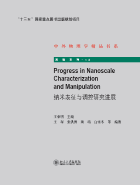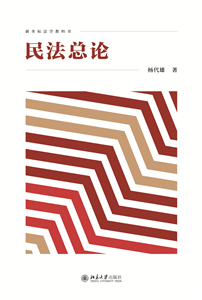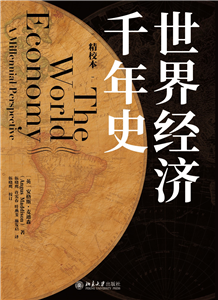基本信息 Information

纳米表征与调控研究进展Progress in Nanoscale Characterization and Manipulation
目录
前言
本书特色
作者简介
内容简介
1 Electron/Ion Optics
1.1 General ray diagram of TEM
1.2 Electron sources
1.3 Optics
1.4 Detectors
1.5 Ion optics
2 Scanning Electron Microscopy
2.1 Introduction
2.2 Fundamentals of the SEM
2.3 Analytical capabilities of the SEM
3 Transmission Electron Microscopy
3.1 Introduction
3.2 High-resolution transmission electron microscopy imaging
3.3 A new approach to image analysis in HRTEM
3.4 Focal series reconstruction
3.5 Convergent beam electron di®raction
3.6 Lorentz electron microscopy
3.7 Electron holography
4 Scanning Transmission Electron Microscopy (STEM)
4.1 Introduction
4.2 The Principle of reciprocity
4.3 Principle of STEM imaging
4.4 HAADF imaging
4.5 ABF imaging
4.6 Scanning Moir¶e fringe imaging
4.7 Application on micro-area analysis
4.8 Discussion and conclusion
5 Spectroscopy
5.1 Introduction
5.2 Principle of EDS and EELS
5.3 EDS+TEM and EDS+STEM
5.4 EELS-TEM
5.5 EELS-STEM and applications
5.6 Spectrum imaging
6 Aberration Corrected Transmission Electron Microscopy and Its
Applications
6.1 Basics of aberration correction
6.2 Aberration corrected electron microscopy
6.3 Applications of aberration corrected electron microscopy
7 In Situ TEM: Theory and Applications
7.1 In situ TEM observation of deformation-induced structural evolution
at atomic resolution for strained materials
7.2 In situ TEM investigations on Ga/In ¯lled nanotubes
7.3 In situ TEM electrical measurements
7.4 Several advanced electron microscopy methods and their
applications on materials science
8 Helium Ion Microscopy
8.1 Introduction
8.2 Principles¢
8.3 Imaging techniques
8.4 Applications
8.5 Current/Future developments
8.6 Conclusion
1.1 General ray diagram of TEM
1.2 Electron sources
1.3 Optics
1.4 Detectors
1.5 Ion optics
2 Scanning Electron Microscopy
2.1 Introduction
2.2 Fundamentals of the SEM
2.3 Analytical capabilities of the SEM
3 Transmission Electron Microscopy
3.1 Introduction
3.2 High-resolution transmission electron microscopy imaging
3.3 A new approach to image analysis in HRTEM
3.4 Focal series reconstruction
3.5 Convergent beam electron di®raction
3.6 Lorentz electron microscopy
3.7 Electron holography
4 Scanning Transmission Electron Microscopy (STEM)
4.1 Introduction
4.2 The Principle of reciprocity
4.3 Principle of STEM imaging
4.4 HAADF imaging
4.5 ABF imaging
4.6 Scanning Moir¶e fringe imaging
4.7 Application on micro-area analysis
4.8 Discussion and conclusion
5 Spectroscopy
5.1 Introduction
5.2 Principle of EDS and EELS
5.3 EDS+TEM and EDS+STEM
5.4 EELS-TEM
5.5 EELS-STEM and applications
5.6 Spectrum imaging
6 Aberration Corrected Transmission Electron Microscopy and Its
Applications
6.1 Basics of aberration correction
6.2 Aberration corrected electron microscopy
6.3 Applications of aberration corrected electron microscopy
7 In Situ TEM: Theory and Applications
7.1 In situ TEM observation of deformation-induced structural evolution
at atomic resolution for strained materials
7.2 In situ TEM investigations on Ga/In ¯lled nanotubes
7.3 In situ TEM electrical measurements
7.4 Several advanced electron microscopy methods and their
applications on materials science
8 Helium Ion Microscopy
8.1 Introduction
8.2 Principles¢
8.3 Imaging techniques
8.4 Applications
8.5 Current/Future developments
8.6 Conclusion
















